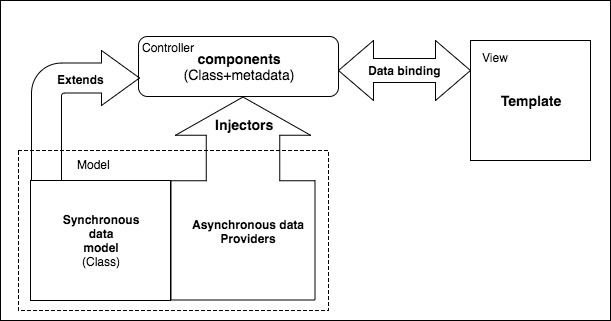To get a brief idea of data flow, let's make a comparative study of how MVC is implemented in Angular. Consider the following diagram:

The diagram consists of basic blocks in Angular 2.0, and not all the facets. The model consists of static data or synchronous data classes, which are extended or imported in components. The components act as controllers that contain business logic. Each component has metadata, which connects it with templates. Finally, the data is bound to the component class variables and is available in templates. Now, for our application, we need the contact data list to be displayed; hence, ...

